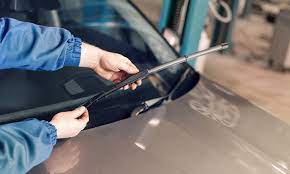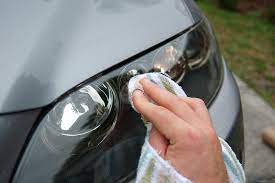How often to change wiper blades? Wipers are an essential part of your vehicle’s safety equipment. Not only do they help you see better in the rain, but they can also help prevent accidents on the road. If your wipers are worn down or missing parts, it’s time for some maintenance! But how often should you change wiper blades? And what’s involved in this process? In this article, we’ll answer those questions and more:
Wiper blade rubber deteriorates over time.
Wiper blades are an important safety feature of your vehicle. They help you see clearly while driving in the rain, sleet and snow, but they also need regular maintenance to keep them working properly.
Wiper blades are made of rubber, which can deteriorate over time. Wipers need to be changed every six months to a year because their lifespan varies depending on the weather conditions where you live and how frequently you use them.
As a general rule of thumb, if your wipers start squeaking or chattering when turned on, it’s time for a new set!
Worn wiper blades can damage your windshield.
Wiper blades are made of rubber, which is a natural material that degrades over time. When the wiper blade no longer cleans the windshield as it should and begins to streak, it’s time for replacement.
Even if your wipers aren’t streaking, you should still check them regularly for cracks or other damage. If you can see a crack in the rubber on your wiper blade, it’s best to replace it immediately because further use may lead to additional issues such as water leaks and damage to your windshield (which will cost much more money than just getting new wipers).
Worn out Wipers Affect Your Visibility in the Rain.
Wiper blades are there to wipe the windshield clean of rain, snow and dirt. They do this by using a rubber blade that moves across the windshield in order to create pressure against it. Over time, these blades wear down and need to be replaced because they cannot remove debris from your windshield as efficiently as when they were new.
Wiper blades should be replaced every 6-12 months depending on how often you drive in bad weather conditions like rain or snow. If you live in an area where frequent snowfall occurs during winter then wiper blades will wear out faster than normal due to frequent use during those months. In addition to needing replacement more frequently because of harsh weather conditions such as heavy rain or snowfall (or both), worn out wipers can affect visibility while driving at night if they are not working properly
Know when to change your wiper blades.
You will know when your wiper blades need to be changed when you can see that they are worn, cracked, damaged, torn or missing.
How often should you change your wiper blades?

In general, wiper blades should be replaced every 6 months to a year. This is because the rubber wears out and becomes less effective with time. Worn rubber can leave streaks or smudges on your windshield, reducing visibility and increasing glare from the sun.
To check for signs of wear in your wiper blades:
- Check the blade for cracks, splits, or tears in its rubber surface. If you notice any of these signs of damage on a blade, it’s time to replace it immediately!
- Inspect the arm itself for signs of damage or wear, the arms are constantly rubbing against objects as you drive down roads (glass shards from broken windows are common culprits), so they’re likely to show some wear even if they’ve never been hit by anything particularly hard. Look for cracks around where they attach to each other or at their pivots, if they seem loose or cracked here, then chances are good that poor quality materials were used when manufacturing them in the first place; replace them right away before this causes further damage!
Need help changing your wiper blades?
If you’re feeling confident, you can change your own wiper blades. The right tools include a screwdriver and a new set of blades. You’ll also need to be able to lift the hood of your car and remove one or two screws from the chassis in order for it to open.
When replacing your windshield wipers, follow these steps:
- Remove the old wiper blade from its arm by pulling upward on it with pliers or another tool designed for this purpose. If there is any difficulty removing the blade, try twisting it back and forth while pulling up on it until it comes free from its mounting bracket (you may need some help from someone else).
- Clean off all dirt or other debris that might be clogging up any parts beneath where you want to install new ones, if there are any obstructions preventing them from fitting correctly or making complete contact with glass surfaces during operation then clean away before installation begins so they won’t damage anything later down the road! Additionally make sure nothing has become so rusty over time that replacement isn’t possible anymore because those would need replacing too before putting new ones on, especially if they’re metal pieces because otherwise corrosion will continue happening indefinitely without regular upkeep being done every few months/years depending on how often they’re used outside year round versus only occasionally during summer months when temperatures tend not being so high outside due “winter” season coming soon enough anyway (and thus maintenance isn’t needed quite yet).
If you can’t remember the last time you changed your wiper blades, it’s probably too late
If you can’t remember the last time you changed your wiper blades, it’s probably too late. Wiper blades should be changed every six months or so to ensure clear visibility on the road (and safety). And if a blade is starting to wear down and has become less than effective in clearing your windshield, it might be time for a new pair.
Wipers are cheap and easy to replace; all it takes is a few minutes of work and some elbow grease (and maybe one or two tools if you’re not experienced with cars). Wipe down your windshield before changing the blades so that they’ll adhere properly, otherwise they may seem like they’re sticking at first but fall off when driving at high speeds or in heavy rain or snowfall. This step will help make sure that your new wipers stay put for years to come!
Conclusion
If you’re not sure when to replace your wiper blades, it’s best to err on the side of caution and change them before they start causing problems. You’ll be glad you did when winter rolls around and your wipers are still in good shape!







